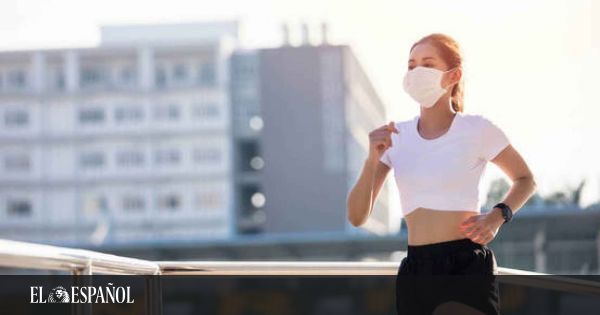
Related news
Several studies have analyzed the impact of the use of surgical masks on cardiovascular and subjective responses to exercise. However, these masks are not widely used, And few studies have analyzed the impact of fabric masks. The results of a small clinical trial, published online in the journal British Journal of Sports Medicine, Reveal that the use of a fabric face covering reduces performance and physical fitness during exercise, especially at the highest intensity.
Users also reported an increase in difficulty breathing and claustrophobia at higher exercise intensities, which led researchers to suggest the modification of frequency, intensity, duration and type of exercise performed when wearing a cloth mask. According to the researchers, recommendations on the use of masks during exercise vary around the world and the physiological impact of the use of cloth masks during exercise is little known.
In an attempt to fill this knowledge gap, the researchers compared exercise performance 31 healthy adults, aged 18 to 29, while running on a treadmill until exhaustion, once with a cloth mask and another without.
Blood pressure, heart rate, oxygen saturation, exertion, and difficulty breathing were measured and recorded after a 3-minute warm-up, during the exercise test, and 7 minutes after warm-up. the completed (recovery period). They were asked to rate their experiences when wearing a face mask, including comfort, temperature and breathability, immediately after completing the masked test.
Participants used to perform an average of 170 minutes / week of moderate physical activity and 206 minutes / week of vigorous physical activity. None smoked cigarettes, although three said they smoked marijuana and five participants indicated a history of medically controlled asthma. Tnothing four out of four said they had worn a face mask while exercising before participating in the study and 19 (61%) said their exercise center required it.
Analysis of the recorded data showed that, compared to not wearing a cloth face mask, its use led to a significant reduction in operating time (14%) and physiological measures of capacity, including maximum oxygen consumption (29% reduction) and maximum heart rate, as well as an increase in shortness of breath.
These changes reflected the intensity of the exercise and were attributed to the perceived discomfort associated with the use of the mask. They were resolved after the 7-minute recovery period, when the results of the two tests ceased to be different.
Claustrophobia and shortness of breath
Compared to not wearing a cloth face mask, participants said they felt it increasing shortness of breath and claustrophobia at higher exercise intensities while wearing one. Most participants (30) agreed or strongly agreed that it was more difficult to give maximum effort during the test while wearing a mask.
Responses included, “harder than last time,” “I get tired faster, it didn’t affect me during the walking stage, it affected me during the trot,” especially at higher intensity “running was harder than normal, breathing became harder as my speed / incline increased, “” I had difficulty breathing, I felt I couldn’t breathe deeply “and” I had to breathe deeper to get the same amount of air “.
Participants also mentioned that they felt “claustrophobic,” “suffocated,” and “anxious.” while wearing the mask and breathing “shorter and shallower with the face covered.” It should be noted that the moisture or weight of the mask inhibits their performance or forces them to interrupt the exercise test.
“As our results do not fully explain how the use of the mask could directly limit cardiovascular function, our conclusion is that the discomfort associated with the use of the mask, as evidenced by the higher ratings of dyspnea in the condition of the mask and the qualitative comments of the participants, led directly to reduced performance“Researchers suggest.
“Our results have various implications for training and performance while wearing a cloth face mask, they add. First, how the use of a cloth mask reduced exercise performance, peak VO2 and related variables, training variables frequency, intensity, time and type of training. ‘activity must be modified accordingly “.
“Second,” he continues, “the goals of the exercise can be modified to reflect the reduction in performance and the psychological impact of wearing a cloth mask, while promoting the safe achievement of goals.” .